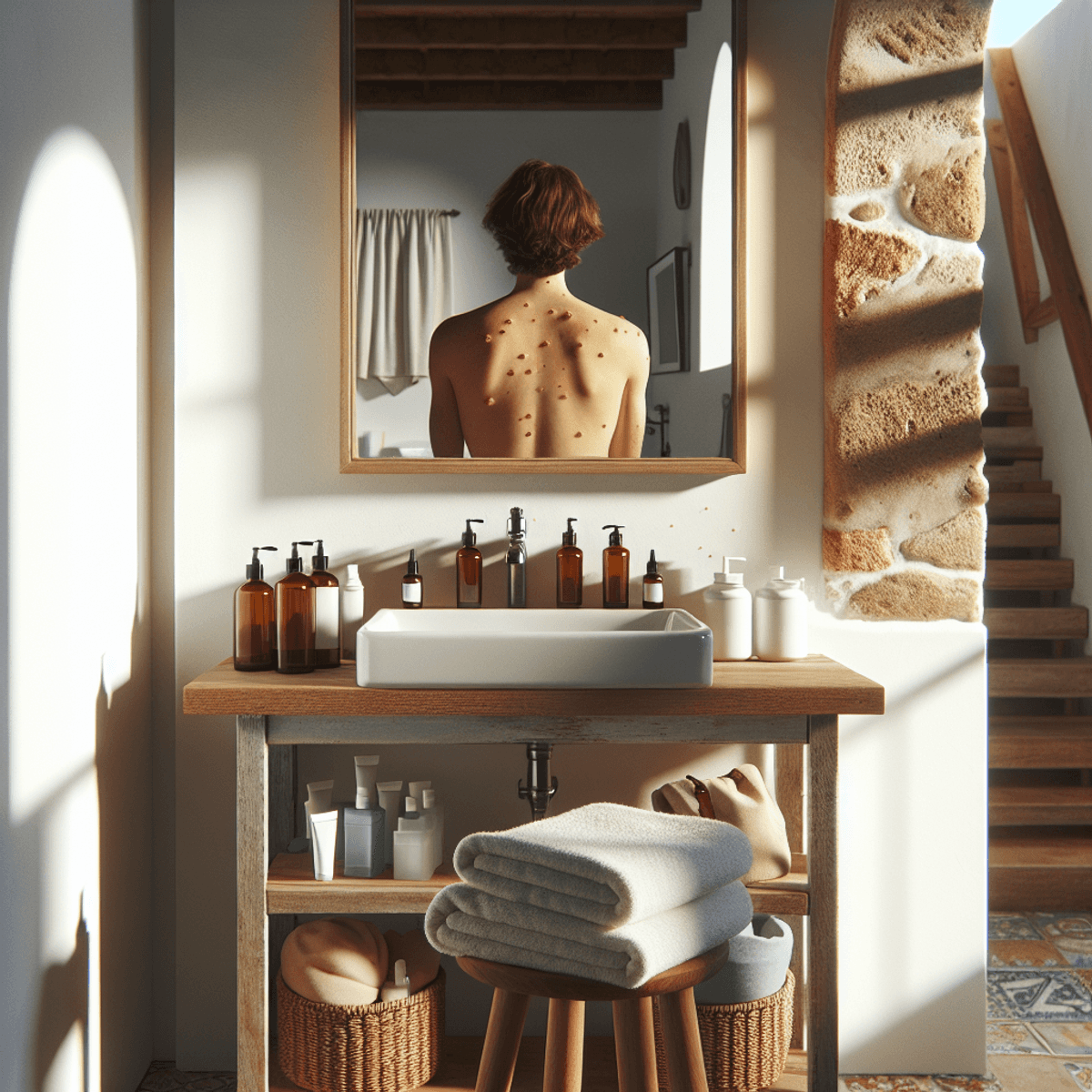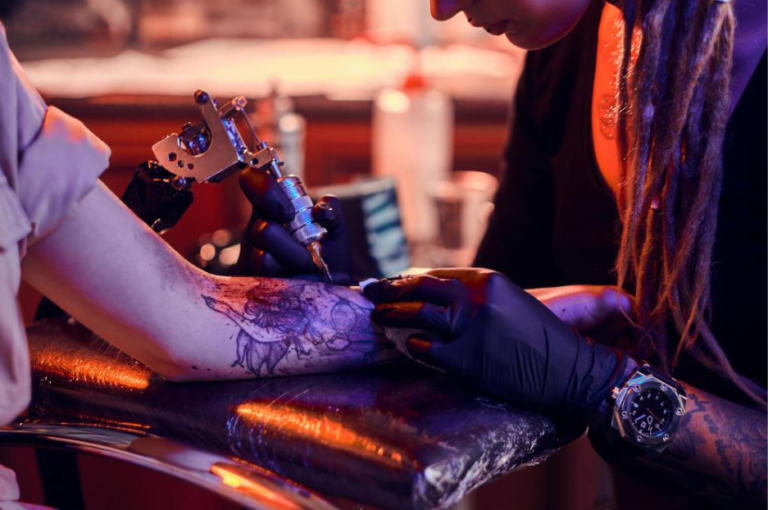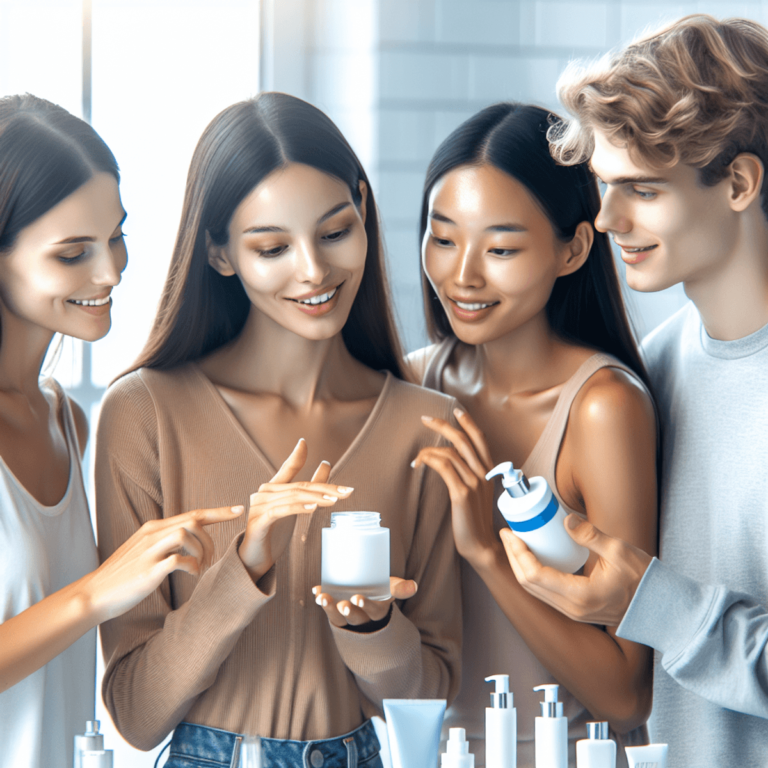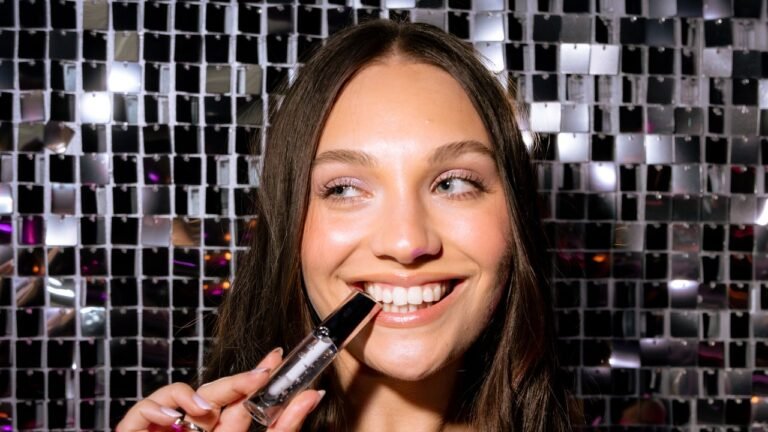Inflammatory Acne: Symptoms, Types, Causes, Treatment

Introduction
Inflammatory acne is a common skin condition that affects many individuals, leading to red, swollen, and painful blemishes. These blemishes often contain pus and can significantly impact self-esteem and quality of life. Understanding the symptoms, types, causes, and treatment options for inflammatory acne is crucial for effective management. This knowledge empowers you to make informed decisions about your skincare routine and treatment strategies.
Key takeaway: The journey to clear skin starts with understanding the complexities of inflammatory acne. Whether you’re struggling with how to get rid of pimples overnight or searching for natural ways to remove pimples permanently, awareness is your first step.
In this article, explore:
- Symptoms: Learn about the various manifestations such as papules, pustules, nodules, and cysts.
- Types: Differentiate between each type to better identify what you’re experiencing.
- Causes: Delve into factors like hormones, genetics, and lifestyle influences.
- Treatment Options: Discover both over-the-counter solutions and advanced medical therapies.
- Preventive Measures: Tips on maintaining a skincare routine tailored to your needs.
Understanding Inflammatory Acne
Inflammatory acne is a common skin condition that shows up in different ways. Knowing these signs is crucial for figuring out the type of acne and finding the best treatments. Let’s dive into the typical symptoms of inflammatory acne: papules, pustules, nodules, and cysts.
Symptoms of Inflammatory Acne
Papules
Papules are small, raised red bumps on the skin that are often tender to the touch. They occur when hair follicles become clogged with oil and dead skin cells, leading to inflammation without pus formation. These bumps can be a frequent source of discomfort due to their sensitivity.
- What They Look Like: Solid, red spots without visible pus.
- Where You Might See Them: Forehead, chin, and cheeks.
Pustules
Pustules are another type of inflammatory acne distinguished by their white or yellow centers filled with pus. They form when blocked pores result in inflammation and an accumulation of white blood cells.
- What They Look Like: Red at the base with a whitish top where pus is present.
- Where You Might See Them: Face, back, and shoulders.
Nodules
Nodular acne manifests as larger, firmer lumps beneath the skin’s surface. These painful lesions develop when severe inflammation occurs deep within a hair follicle.
- What They Look Like: Hard to the touch and do not have a “head” like pustules.
- Where You Might See Them: Jawline, neck, and back.
Cysts
Cystic acne represents one of the most severe forms of inflammatory acne. Cysts are painful, large lumps filled with pus that form deeper within the skin layers compared to other types of acne lesions.
- What They Look Like: Swollen lumps with a soft texture due to fluid accumulation.
- Where You Might See Them: Face, chest, and upper arms.
Recognizing these different types of bumps can help you identify your specific type of acne and decide how to treat it effectively. It’s important to understand how these symptoms indicate varying degrees of severity in inflammatory acne.
For those looking for quick solutions like getting rid of a pimple in an hour or stopping pimples from appearing frequently, addressing the root cause is key. Whether dealing with little bumps on arms or learning how to get rid of zits fast on your forehead, understanding the nature of each symptom can guide effective treatments and preventions.
Knowing what each type looks like contributes significantly towards improving skin health by facilitating targeted treatments. This knowledge sets the stage for exploring various causes behind these symptoms which will be discussed further in subsequent sections. Through this understanding, individuals can better manage their conditions using appropriate pimple solutions tailored to their specific needs.
Types of Inflammatory Acne
Understanding the different types of inflammatory acne is essential for accurate diagnosis and effective treatment strategies. This section delves into the various forms of acne that can affect skin health.
Papules
Papules are small, raised red bumps that form when hair follicles become clogged with excess oil and dead skin cells. These bumps are often sensitive to the touch and can contribute to an uneven skin texture. While they may not contain pus, papules can lead to more severe acne lesions if not managed properly.
Pustules
Pustules are inflamed pimples filled with pus, appearing as white or yellowish bumps surrounded by a ring of redness. This type is often what people refer to when considering how to get rid of pimples fast or remove them overnight. They result from the body’s immune response to bacterial invasion in a clogged pore, causing swelling and discomfort.
Nodules
Different from papules and pustules, nodules penetrate deeper into the skin layers, forming firm lumps beneath the surface. These lesions are typically painful and do not have a visible “head.” Their depth makes them challenging to treat with over-the-counter solutions alone, often requiring intervention from a dermatologist.
Cysts
Cysts represent the most severe form of inflammatory acne, characterized by large, painful, pus-filled lesions deep within the skin. These cysts can cause significant discomfort and often lead to scarring if not treated appropriately. Dermatologists may recommend advanced treatments like corticosteroid injections or laser therapy as a pimple solution for these stubborn lesions.
Recognizing these types is crucial for determining how you might approach treatment—whether it’s seeking medical advice on how to get rid of tiny bumps on face or employing home remedies for pimples on buttocks. Each type requires specific care strategies to prevent complications such as permanent scarring or post-inflammatory hyperpigmentation. For comprehensive guidance on effective treatment methods, including how to get rid of pimples, it’s advisable to seek professional advice or consult reliable resources.
Causes of Inflammatory Acne
Understanding the causes of acne is essential in addressing this common skin condition. Inflammatory acne develops when hair follicles become clogged with dead skin cells, oil (sebum), and bacteria. This blockage leads to inflammation, resulting in various types of lesions on the skin.
How Clogged Pores Lead to Inflammation
The journey from a clear pore to an inflamed acne bump begins with clogged pores. When sebum and dead skin cells accumulate, they create an environment conducive for bacterial growth, particularly Propionibacterium acnes. This bacteria triggers an immune response that results in redness, swelling, and pus formation—characteristics of inflammatory acne.
Hormones and Genetics: Key Contributors
Hormonal fluctuations often play a significant role in acne development. During puberty, increased androgen levels result in heightened sebum production, making teenagers particularly susceptible. However, hormonal changes aren’t exclusive to adolescence; stress, menstrual cycles, pregnancy, and certain medications can alter hormone levels, potentially leading to breakouts.
Genetics also influence one’s propensity for developing acne. If your parents experienced severe acne, you might be predisposed due to inherited traits such as excess sebum production or a more robust inflammatory response.
Risk Factors for Developing Inflammatory Acne
Several risk factors may trigger or exacerbate inflammatory acne:
- Poor Hygiene Practices: Not cleansing the face regularly can lead to an accumulation of oil and dirt. However, over-washing can strip the skin of its natural oils, causing it to produce even more sebum.
- Dietary Influences: Diets high in sugar and dairy have been linked to increased acne severity. These foods can elevate insulin levels and alter hormonal activity, potentially worsening breakouts.
- Environmental Factors: High humidity levels can increase sweat production and oiliness on the skin’s surface, both contributing to clogged pores.
- Certain Medications: Drugs containing corticosteroids or lithium are known to trigger breakouts by increasing oil production or altering hormone levels.
Lifestyle Influences on Acne
Addressing lifestyle influences can be pivotal in managing acne:
- To learn how to get rid of under-the-skin pimples or how to get rid of tiny bumps on your face quickly, maintaining a consistent skincare routine is crucial.
- Incorporating non-comedogenic products into your regimen helps prevent pores from clogging while still providing necessary hydration.
- Natural remedies like tea tree oil may offer relief if you’re wondering how to remove pimples naturally at home.
For those dealing with persistent issues like how to get rid of red marks left by spots, opting for the best cream to remove pimple marks fast can aid in improving skin appearance. Modern solutions like those offered by SkinMedica are worth considering for effective treatment options.
By understanding these causes and risk factors—and taking proactive measures—you can reduce the incidence of breakouts and work towards clearer skin.
Diagnosis and Evaluation
Understanding how inflammatory acne is diagnosed is a crucial step in managing this skin condition effectively. Dermatologists play a key role in determining the type and severity of acne through both clinical presentation and patient history. During an examination, they look for specific inflammatory acne symptoms such as papules, pustules, nodules, and cysts. Identifying these symptoms helps distinguish inflammatory acne from other skin conditions.
Physical Examination
A thorough physical examination is essential to differentiate between various types of acne lesions. Dermatologists assess factors such as the size, depth, and distribution of blemishes on the skin. This process enables them to tailor treatment plans for each individual’s unique condition, whether it involves strategies on how to cure pimples, or methods for pimple scar removal.
Patient History
Patient history is also significant in the diagnostic process. Dermatologists may inquire about lifestyle habits, skincare routines, dietary influences, and any previous treatments attempted. This information aids in identifying potential triggers for breakouts, such as certain medications or environmental factors like humidity.
For anyone facing challenges like wondering how to stop pimples coming on face at home or seeking advice on pimples on buttocks treatment, consulting with a dermatologist provides a comprehensive evaluation that paves the way for effective management strategies tailored to your needs.
Treatment Options for Inflammatory Acne
Dealing with inflammatory acne can be challenging, but there are many treatment options available to help reduce symptoms and manage breakouts. Knowing about the different methods, from over-the-counter solutions to more advanced treatments, can empower you to take control of your skin’s health.
Over-the-Counter Treatments
For mild cases of inflammatory acne, several over-the-counter (OTC) products can be effective in reducing blemishes and preventing future breakouts:
- Benzoyl Peroxide: Commonly found in acne treatments, benzoyl peroxide helps reduce bacteria on the skin and exfoliate dead skin cells. It’s particularly useful for quickly getting rid of pimples.
- Salicylic Acid: A popular ingredient in many acne products, salicylic acid works by unclogging pores and reducing inflammation. It can be beneficial for treating tiny bumps on the face or arms.
- Sulfur: Known for its ability to dry out surface-level blemishes and absorb excess oil, sulfur is often used in combination with other ingredients in acne treatments.
For those seeking natural alternatives or home remedies for pimples, tea tree oil and green tea extract are known for their anti-inflammatory properties.
Prescription Medications
When OTC treatments prove insufficient, prescription medications may be necessary. Consulting a dermatologist is crucial to tailor a treatment plan suited to your specific needs:
- Retinoids: Derived from vitamin A, retinoids help promote cell turnover and prevent clogged pores. They are effective for stopping breakouts and treating blackheads.
- Antibiotics: These are prescribed to reduce inflammation and bacterial growth. Often combined with other treatments, antibiotics target severe pustules or cystic acne.
- Hormonal Therapies: For individuals whose acne is linked to hormonal fluctuations, such as during puberty or menstruation, hormonal therapies may offer relief.
Advanced Treatment Methods
For severe cases or when traditional approaches fail, advanced treatment options may be considered:
- Corticosteroid Injections: Targeting individual cysts, these injections rapidly reduce swelling and pain. They provide immediate relief for painful nodules.
- Laser Therapy: This method targets active lesions by minimizing bacteria and reducing inflammation. Laser therapy can also aid in scar removal by promoting skin healing.
These advanced techniques require professional supervision but can drastically improve the condition when traditional methods do not suffice.
Preventive Measures
In conjunction with treatment plans, adopting preventive measures plays a key role in maintaining clear skin:
- Consistent Skincare Routine: Gentle cleansing twice daily with non-comedogenic products prevents pore-clogging without over-stripping the skin.
- Dietary Adjustments: Reducing high sugar and dairy intake can help minimize breakout triggers.
Understanding and utilizing these diverse treatment options equips you with the knowledge needed for effective management of inflammatory acne. By exploring both simple remedies like removing dark spots caused by pimples overnight through OTC solutions to pursuing advanced interventions like laser therapy, you ensure a comprehensive approach tailored to your unique skin concerns. For a more extensive list of possible treatments, you might want to explore this resource on the best acne treatments according to experts.
Preventive Measures for Inflammatory Acne
Effective management of inflammatory acne begins with a consistent skincare routine tailored to your skin type. For those with oily or acne-prone skin, it is crucial to cleanse gently twice daily. Avoid over-exfoliating or using harsh scrubs as these can exacerbate inflammation and irritation. A gentle approach helps maintain the skin’s natural barrier while minimizing the risk of developing further acne lesions.
Incorporating non-comedogenic products into your regimen is another vital step in reducing acne outbreaks. Non-comedogenic products are formulated to minimize pore-clogging potential, which is essential for keeping your skin clear. These products provide adequate hydration without contributing to the development of new pimples.
Complications Associated with Inflammatory Acne
Leaving inflammatory acne untreated or improperly managed can lead to several complications:
- Post-inflammatory hyperpigmentation (PIH): This condition results in dark spots on the skin following the healing of active lesions. PIH can be distressing and often takes several months to fade, requiring patience and proper skincare.
- Scarring: Severe cases involving deep nodular or cystic acne can result in permanent scarring. These scars may be difficult to treat and often require professional interventions such as laser therapy or dermal fillers.
Understanding how to manage complications is just as important as addressing the acne itself. To tackle issues like how to remove dark spots caused by pimples or how to get rid of deep pimples, consider consulting a dermatologist who can recommend effective treatments tailored to your needs.
For those looking for quick fixes, there are various home remedies and techniques you can try, such as how to get rid of acne fast with these tips and tricks.
When dealing with teenage pimples, maintaining hygiene and avoiding picking at blemishes is essential for preventing further complications. For persistent issues like how to get rid of cystic pimples or how to shrink a cystic pimple overnight, professional advice should be sought.
While at-home solutions provide temporary relief, long-term strategies involve lifestyle changes such as managing dietary habits and stress levels, both of which play significant roles in acne flare-ups.
Emphasizing preventive measures not only aids in managing current breakouts but also reduces future occurrences, fostering healthier skin over time.
Conclusion: Managing Inflammatory Acne Effectively
Dealing with inflammatory acne can be a daunting journey, but understanding its symptoms, types, causes, and available treatment options is the first step towards effective management. Acne, especially during the teenage years, can impact self-esteem and emotional well-being. Yet, an individualized approach tailored to the severity and type of acne you experience can yield positive outcomes.
For those seeking how to get rid of teenage pimples naturally at home, consider incorporating gentle skincare routines using non-comedogenic products. If you’re wondering how to remove pimples overnight at home, while there’s no magic cure, applying ice packs to reduce swelling or using over-the-counter pimple remedies like benzoyl peroxide might help. How to get rid of chin pimples overnight often involves similar strategies—gentle cleansing and targeted treatments.
Addressing persistent acne issues calls for understanding preventive measures such as how to stop pimples coming on face permanently. Focus on maintaining a consistent skincare routine and avoiding triggers like high sugar diets. For those dealing with blackheads and whiteheads, learning how to remove blackheads and whiteheads permanently through proper exfoliation techniques can be beneficial.
It’s also worth noting that skin health is closely linked with overall health, including hair health. Thus, addressing issues like hair loss may also contribute positively towards achieving a healthier skin condition.
Consulting with a healthcare professional remains crucial before making significant changes to your skincare regimen or starting new treatments. This ensures that your approach is safe and effective, paving the way for healthier skin in the long run.
FAQs (Frequently Asked Questions)
What are the common symptoms of inflammatory acne?
Common symptoms of inflammatory acne include papules (raised red bumps), pustules (inflamed pimples filled with pus), nodules (firm lumps beneath the skin), and cysts (severe forms causing significant discomfort). Visual characteristics can help in self-identification of these types.
What causes inflammatory acne?
Inflammatory acne is primarily caused by clogged pores that lead to inflammation. Factors such as hormonal changes, genetics, poor hygiene practices, dietary influences (like high sugar and dairy intake), environmental factors (such as humidity), and certain medications can exacerbate the condition.
How can I treat inflammatory acne effectively?
Treatment options for inflammatory acne include topical solutions, lifestyle modifications, and possibly oral medications. It’s crucial to consult a dermatologist for an accurate diagnosis and personalized treatment plan tailored to your specific type of acne.
What are the different types of inflammatory acne?
The main types of inflammatory acne include papules, pustules, nodules, and cysts. Each type has distinct characteristics: papules are raised red bumps; pustules contain pus; nodules are firm lumps beneath the skin; and cysts are painful lesions that can cause significant discomfort.
How can I prevent inflammatory acne from developing?
Preventative measures for inflammatory acne include maintaining good hygiene, managing stress levels, following a balanced diet low in sugar and dairy, and avoiding known triggers. Keeping the skin clean and moisturized can also help reduce breakouts.
When should I see a dermatologist for my acne?
It’s advisable to see a dermatologist if your acne is severe, persistent, or causing emotional distress. A professional can provide an accurate diagnosis, recommend effective treatments, and help you manage your skin condition more effectively.










